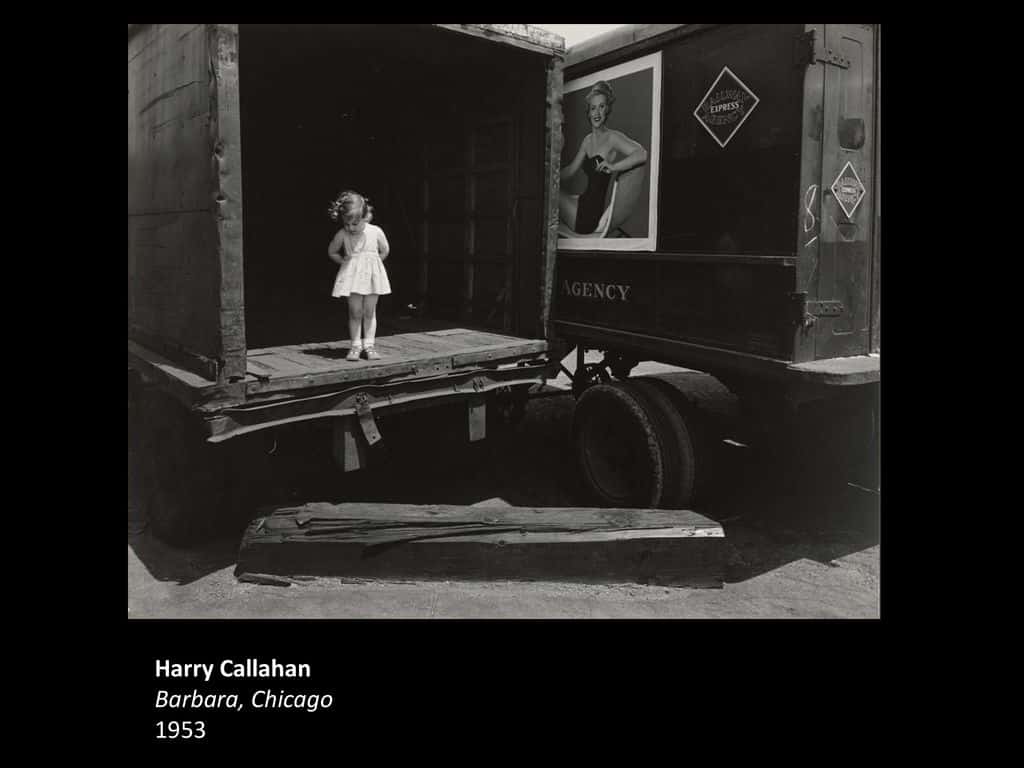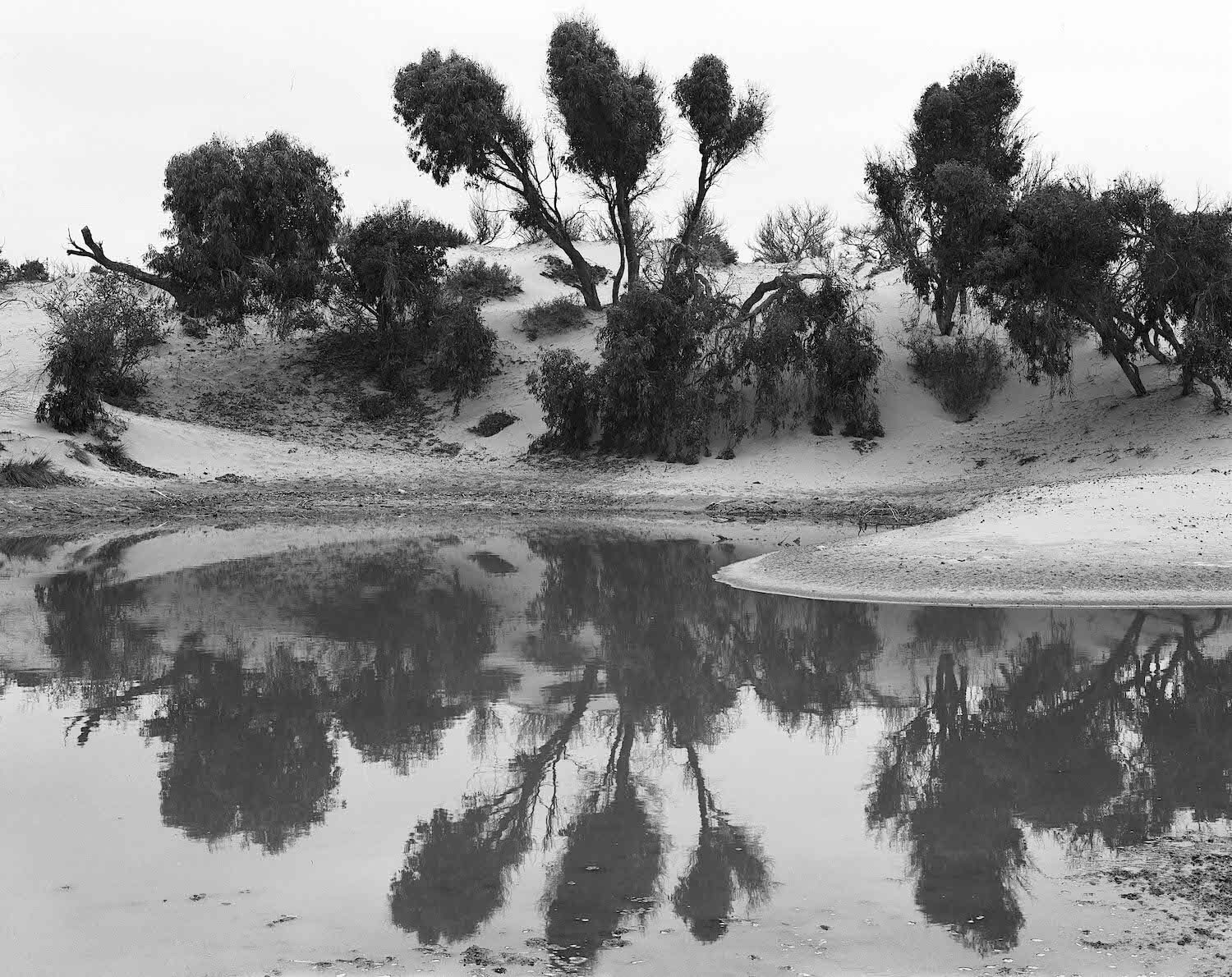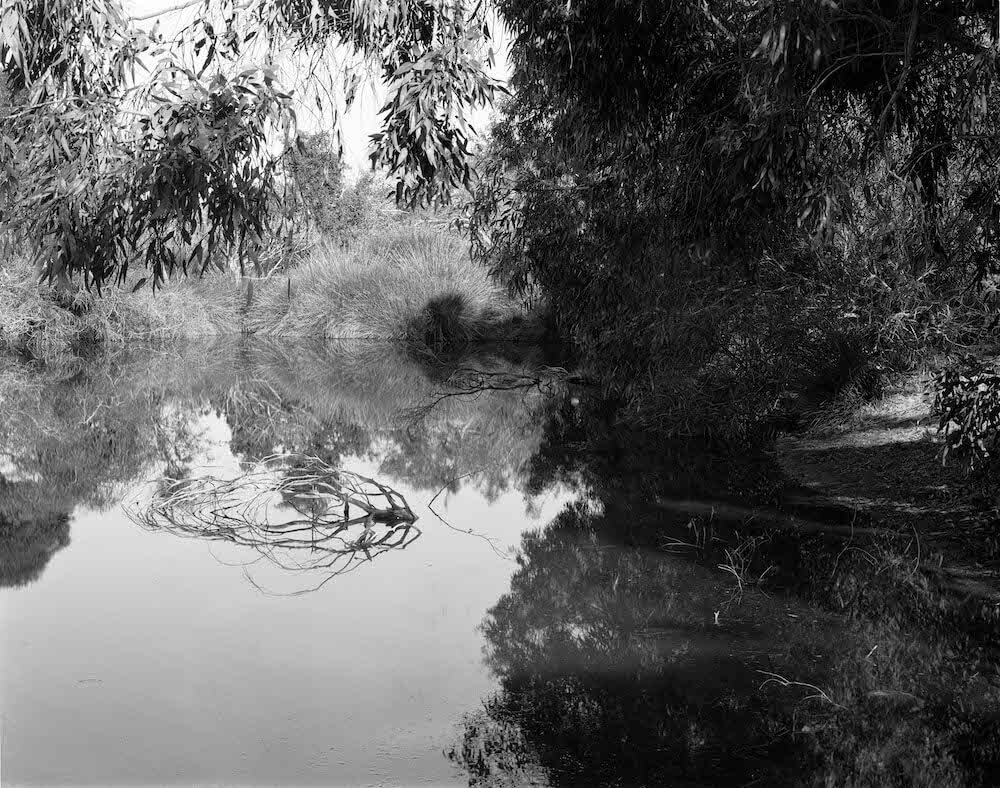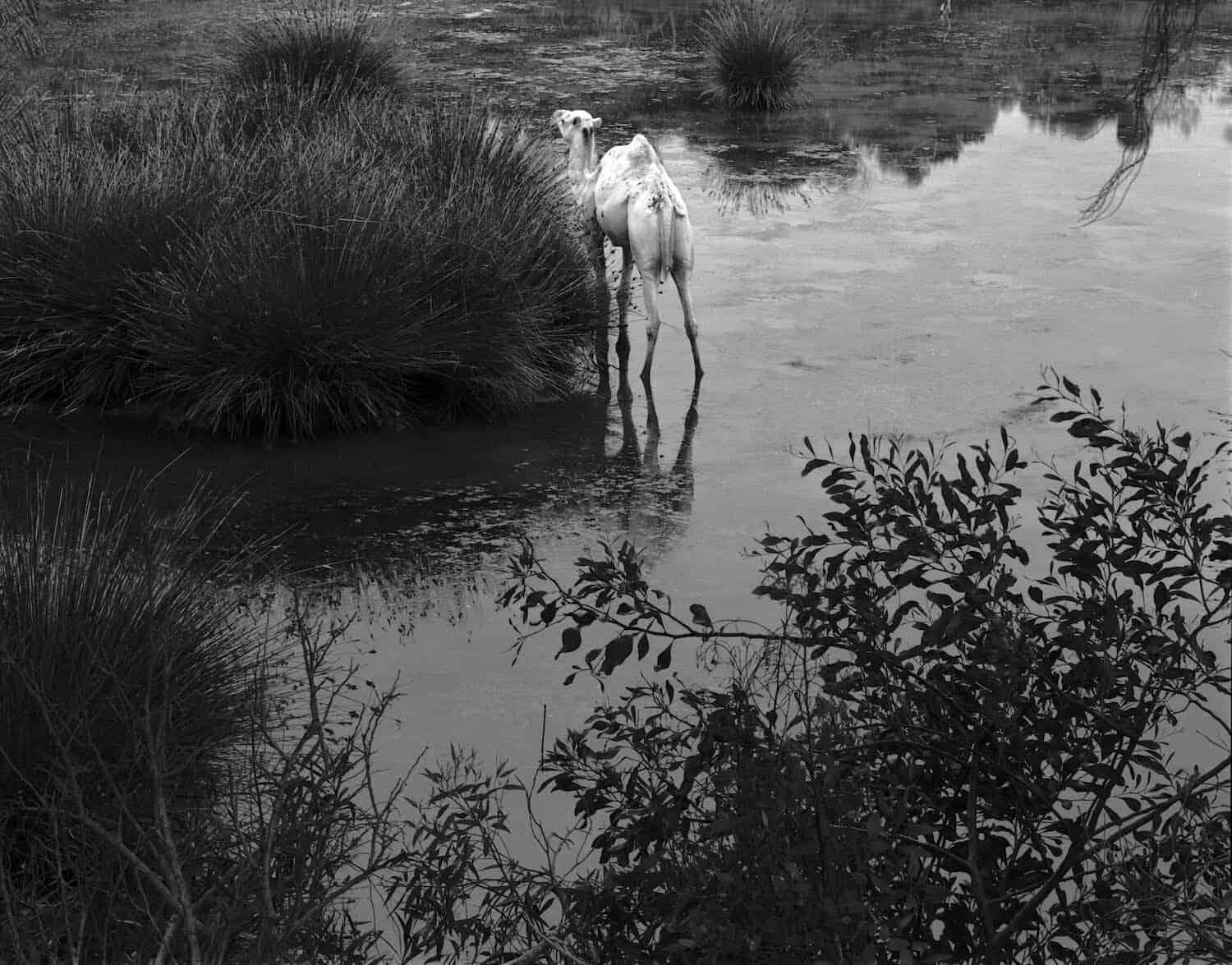Being stuck can manifest itself in a myriad of ways including having no inspiration, going through the motions or disliking your images. As photographers, the negative effects of auto pilot and repeating ourselves can often be down to having no inspiration or just doing what you know has worked in the past. It may be a particular approach, way of framing or camera position which gets you workable or indeed acclaimed results. Both can lead to feeling bored with your own imagery. On the contrary, professional photographers have a template of developed responses and known outcomes that are extremely useful for minimising thinking and execution time. But for the enthusiastic amateur, such auto slickness can lead to staleness.
STUCK ON REPEAT? KNOW YOUR PHOTOGRAPHERS
We can find inspiration from looking at great photographers

Be wowed and inspired. Start by looking at Harry Callahan's photos (6 trees & girl).
Considered one of the 20th Century’s great artistic innovators and technicians of b&w photography, Callahan is a great starting point to grasp how an image-maker can fluidly move between subjects and approaches. In the space of ten years between 1948 and 1958, Callahan mastered still life, contextual portraits, landscape, urban scenes, architecture, street portraits, and abstract and experimental double exposure in camera. The only constant was Callahan’s eye.
He frequently photographed his wife and daughter and made them inclusive of his art. In this photo he would have been aware of Barbara’s light coloured dress, perhaps even ensured it’s what she would wear knowing he would need a darker location as a backdrop. Recognising the potential of the poster and enveloping narrative moment, quickly he would have found his form with a central split composition but elevated by the wooden step ‘underscore’ creating a triangular dynamic. The shadow on her right arm and her gaze down contrasting with the poster woman’s direct gaze are then sprinkled with gold dust. In printing, Callahan would have tonally set the darker areas to black minimising unwanted distractions. It doesn’t get any better than this. Callahan was self-taught but is undisputedly one of the all-time great photographers.

Know where you will find the material to get your teeth into.
Some folk need to connect with a location before they can see the visual possibilities and so consequently find few places to be able to make photos. This is acceptable if your work is a slow train and you’re happy to progress along this track. Often we, and I mostly include myself here, look for the places where we first feel good; excited, engaged and stimulated. Our images will follow accordingly.
It’s essential to have a core of these places; the hotspots personal to you. Do you like junk or the clean lines of Barcelona…or both perhaps. So get to know what you like, what fires you up. It’s an essential starting point. Once you know your way around, try to photograph them in different ways. Don’t auto-response them; you’re developing your creative muscle. Think Callahan.
But having just our constant location bedfellows can lead to having no inspiration, going through the motions and disliking your images which will ultimately lead to frustration. So, challenge yourself by visiting locations you would not readily venture into, the ones where in the past you couldn’t get a photographic foothold. Why is that I wonder? You can do this by initially using your mobile phone to compose, that way the associated failure and difficulties with your DSLR / mirrorless will be disconnected.
By trying to see a place afresh perhaps from an untypical angle or distance that your phone, ably allows, you’ll be more attune to exploring and engaging. You’re not putting pressure on yourself as a photographer holding up a substantial camera and lens. Evaluating these images will offer pathways into more photography there. The more locations you explore with exploratory, tentative steps and the intent of eventually making images, will lead you to create more striking and surprising photographs back at the places you love the most.

Begin to look outside your orbit and reinvent your photography.
A great deal of photography from longstanding serious amateurs and professionals is staid. Being an expert is no immunity to staleness. So start to spend time online or at bookstores and exhibitions looking at photographers you wouldn’t readily view and value the broad range of approaches out there.
Many photographers stick to absorbing only their tribe(s). Instead, allocate review time to another tribe. Appreciate what they do. You don’t have to like it but it will give you ideas about what you don’t like and internally rationalise why that is.
Reinvent yourself. Use a camera app on your phone that emulates old film types. You can return to a familiar location and re-see through the phone. The detachment and processing of the app will allow you to think about an approach not limited to the ‘straight’ colour representation of your camera.
Change from your usual aspect ratio to something different. If your camera doesn’t have this option, employ electrical tape on the back screen to mask it off. You can then use your viewfinder to compose and check the screen to see how that tallies up. Switch to using different focal lengths or limit yourself to using it at one location or indeed for a period of time. Take an art class or a course in alternative photography using a pinhole camera or one using film to make digital prints. Go arty!
Don’t use social media (SM) as a barometer of success or to direct your creative progress.
SM successfully favours the single image with the ‘wow’ factor. The platforms don’t readily enable projects to be viewed as they should be, whilst clearer more simple photographs tend to catch the eye more so than busy, quiet and subtle imagery which can get can get drowned out. Some platforms also crop or reduce file quality which can be frustrating to see.
There is also a psychology to what people ‘like’ with some element of tribe reinforcement coming into play. Can we really trust that one of our supporters had a view of our photograph? Instead, you have to follow your own path.
Once you’ve built up an audience who likes your photography, there’s a tendency to continue pleasing them, switching to something entirely different may lose your likes, but you should resist the vote count and move on if the need takes you.






